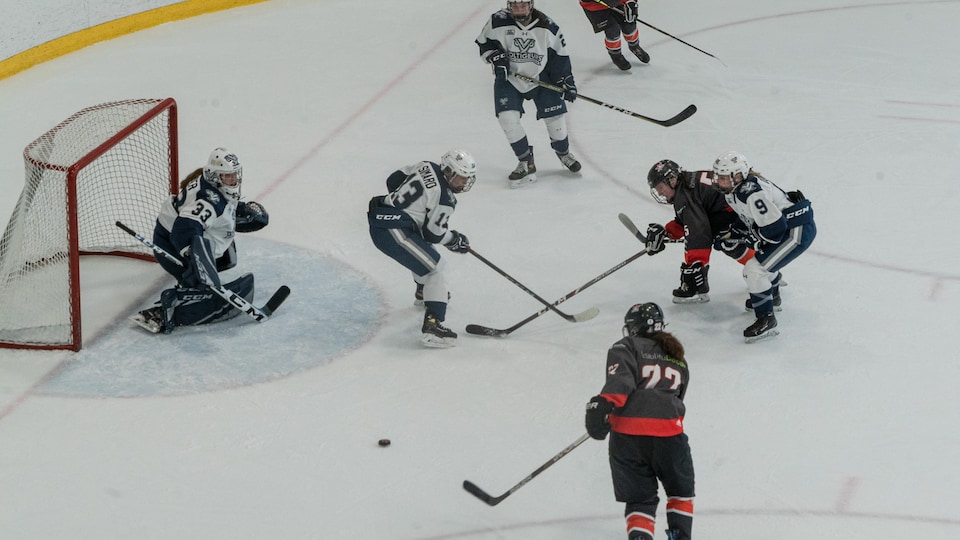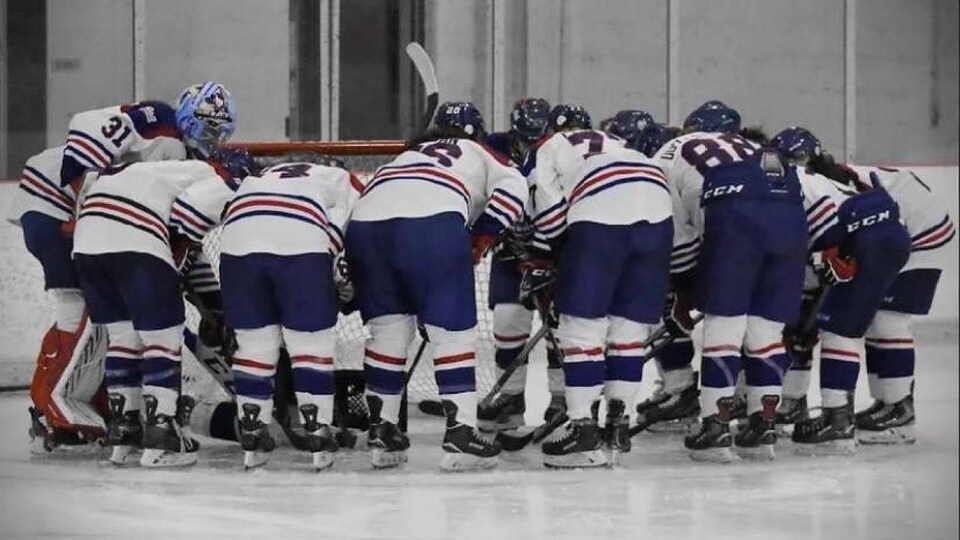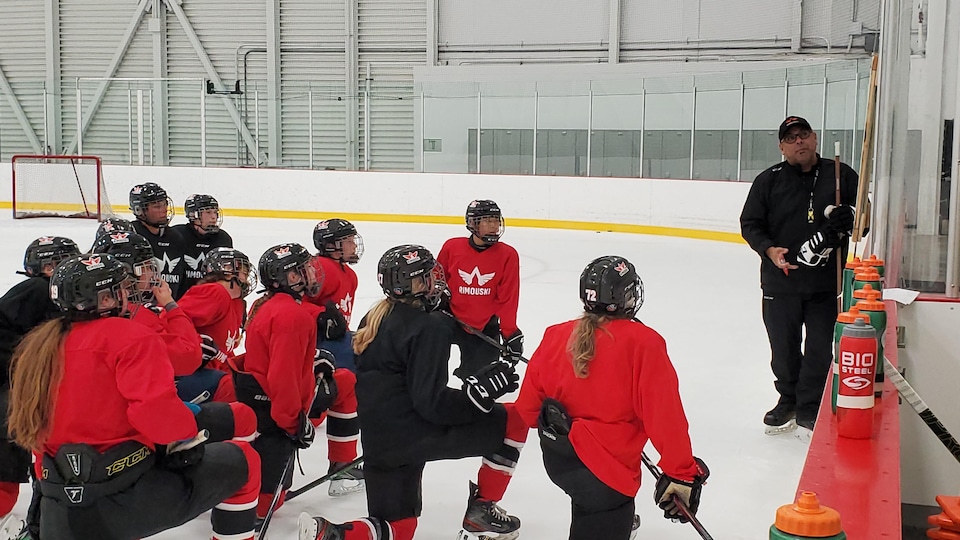Last week, we learned of the end of the female hockey program at Cégep de Saint-Laurent. Many conversations have taken place and the program may finally return next year. Meanwhile, Radio-Canada Sports learned of the closure of the women’s hockey sports-study program at Fadette high school in Saint-Hyacinthe due to a lack of registration.
On the one hand, there seems to be a lack of options for girls who want to thrive in hockey, on the other hand, programs are difficult to recruit due to the particular distance between teams. The situation was not simple and Radio-Canada Sports tried to navigate it.
For the Fadette situation, we had several meetings to find solutions. […] We set up a committee and we are looking at possible solutions for next season. We will look at what can be done for young women in the Richelieu region. We will try to find a solution for the 2023-2024 season. said Marcel Patenaude, hockey director at Hockey Quebec.
In the long run, Hockey Quebec wants every women’s team that makes up the AAA midget league in the province to have an affiliate sports education program. These programs are reserved for girls who are progressing on AAA teams and will allow them to perfect their development.
As for the group of players who have stopped for several years between 6,000 and 7,000 athletes, the hockey director believes he has found a solution. The avenue offered to players who are not part of the provincial elite is to register with the Interregional Women’s Hockey League.
However, the large distance between teams of different categories did not help in retaining the players. The Quebec federation recently began working with the league to reduce the distances covered.
This is the first year we can work directly in that league, where, for example, a young player from Sherbrooke could play in Quebec or Montreal. There are long distances that must be covered. We are now working so that girls can play in more restricted areas and have less travel to do every day to practice their sport. he said.
” I think one of the reasons why we reach the plateau of players is that every time someone registers, someone withdraws because of the distances that have to be covered. I don’t think this is a proper league for low level girls. It is important for Hockey Quebec to take part in improving service to these girls. “
Increasing caliber in college, possible solution
Unlike male hockey players who can continue their development at the junior level, female players who will end their years in midget AAA (the elite league for girls ages 15 to 17) should move to collegiate hockey if they want to continue their journey. in this sport in Quebec. What happens next will lead to the best hockey players in the university.
You need to start by building the base. We only have 6,500 female hockey players in Quebec. The challenge, and it’s not easy, is to group the girls into certain regions so they can play at their level. said Stéphane Auger, head of hockey development and operations at RSEQ.
The question about the number of Division 1 college teams often pops up in discussions. There are currently seven teams in the women’s midget AAA league, as many as in Division 1 of the RSEQ collegiate league (including the Cégep de Saint-Laurent team).
According to Stéphane Auger, reducing the number of teams in the college’s Division 1 will increase the caliber of training and thus keep select players of this age group in the province.
The network (RSEQ) and Hockey Quebec talked to various stakeholders 3 years ago, before I came, and they agreed, to have a slightly fair level of play, to enter a league of six teams. There will be a Division 2 league for players who want to continue their journey in a structured league, with good coaching, but perhaps a bit less strong. he explained.
The league of excellence in hockey in Quebec is the women’s collegiate league. The idea of reducing the number of teams in Division 1 would bring together talent. Players who see that the caliber is not high enough may choose to look for alternatives in the United States, for example, to have a higher caliber of play and access university level. At that time, we lost them. It’s not simple, but it always comes down to the fact that there are only 6,500 female hockey players in Quebec. He added.
Université de Montréal Carabins women’s hockey team coach Isabelle Leclaire agrees. Although she believes that players who choose the United States are doing so without even visiting Quebec facilities, because it was a childhood dream, she thinks reducing the number of women’s teams in Division 1 will be useful.
I speak in my personal name, but I believe that in fact, the product is a bit too diluted in college. There are the same number of college teams as in midget AAA, the division above. Normally, one must have a pyramid to increase in caliber as one progresses through the structure.he explained.
According to him, the adaptation will be easier for players who will make the transition to Quebec university hockey after their CEGEP years. However, he doesn’t want to see college hockey programs disappear.
The solution, in his opinion, is to see the number of teams increase in Division 2, to allow as many players as possible to practice their sport in a supervised and competitive environment, while maintaining a high level. of playing at first. division. The college network currently has four women’s teams in its second division.
There can be a system of promotion and relegation, as we see in some international sports. It’s certainly not that simple, lots of stakes. There are always failures on the part of the colleges, the players, in falling into Division 2. But we need to change mindsets and stop thinking that it is not right to play in Division 2. We need this structure there, if no, girls at The CEGEP level have to stop playing hockey because the service is not offered he says.
Isabelle Leclaire also believes that the idea of establishing a division 2 at the university level should be considered.
Once you leave college, you get to university. If we don’t make teams at the first level, there aren’t many options for women. Some players who came from college are not of the caliber, at present, to make one of the four university teams we have here in Quebec. It’s okay that way if we want to maintain the quality of our great hockey, but we need to offer them an option so they can continue to play, even at that level. did he say.
And after college, what’s next for the players? This is another element we have to deal with eventually.said Leclaire.
Two options are slowly emerging for players coming out of college, but out of place.
We hear a lot about the creation of the professional league, which we hope will eventually see the light of day. We’re talking about January 2023 with the Professional Women’s Hockey Players Association (PWHPA). Since this group was made up of Olympians and girls who played on the national team, it seemed like it wanted to be a level 1 group.explanation by the Carabins coach.
There is also the PHF (Premier Hockey Federation) which announced this winter the creation of a team in Montreal.
Since the two organizations seem unwilling to unite, something seen negatively at base can create us two leagues and two teams: one at a higher level and one at a slightly lower level, as we see in professional to men. This will allow players coming out of college who have not yet carved out a position at the first level of the team to continue their careers. raising Leclarire.
Source: Radio-Canada


